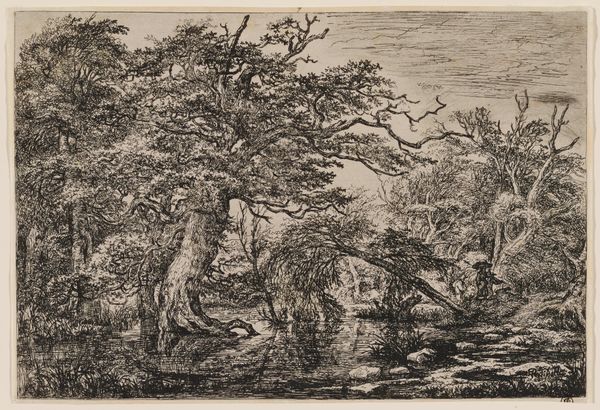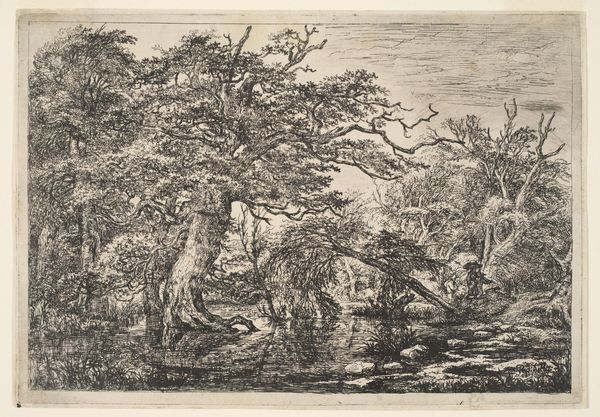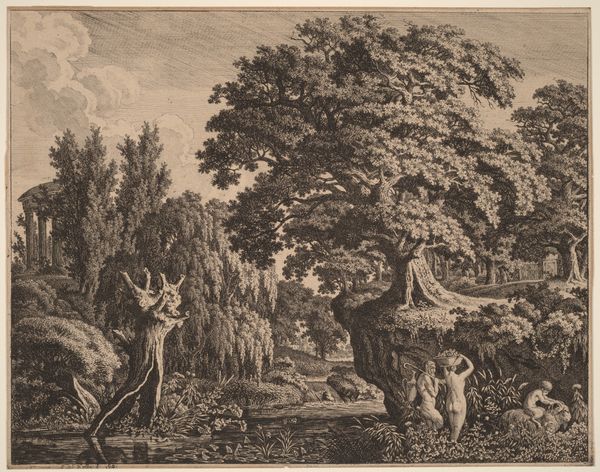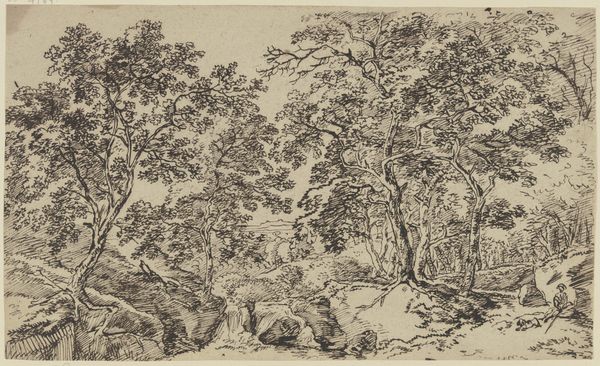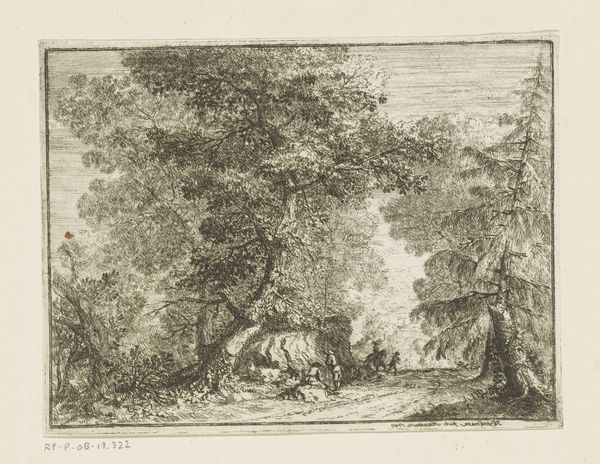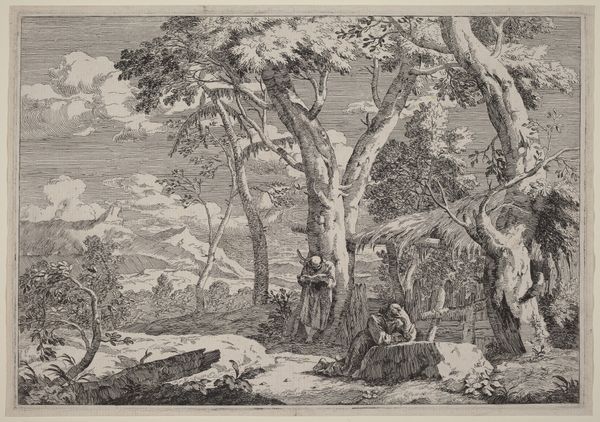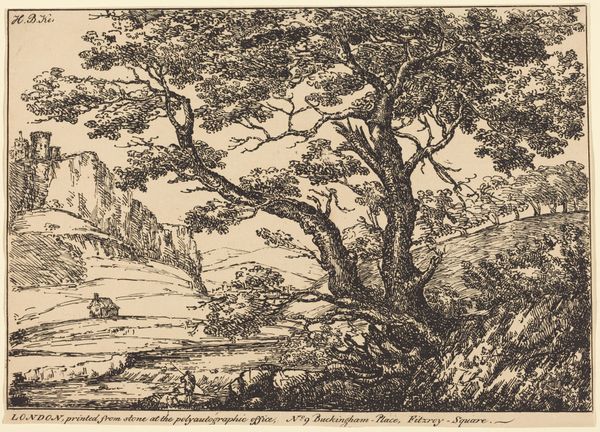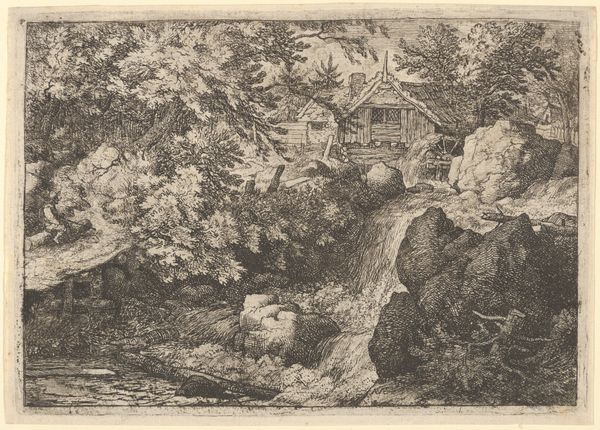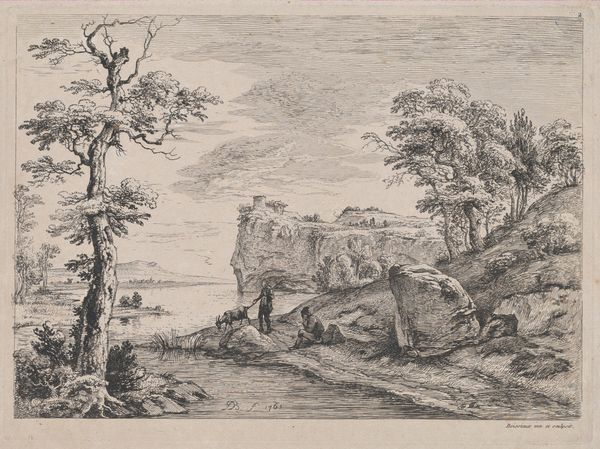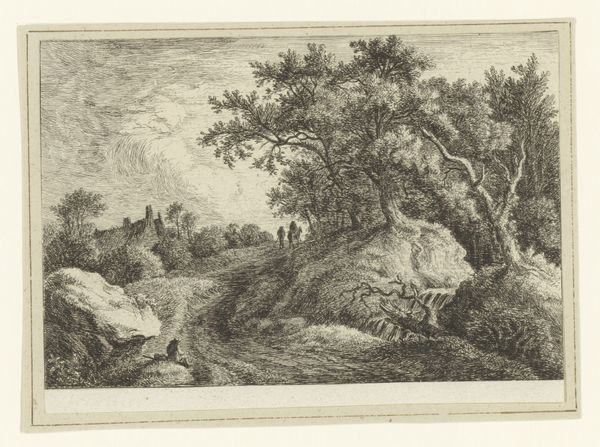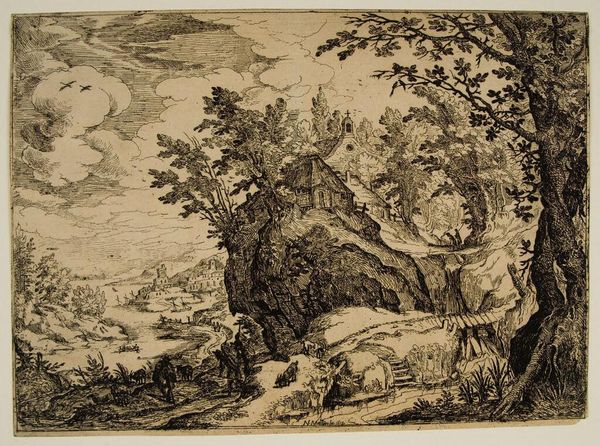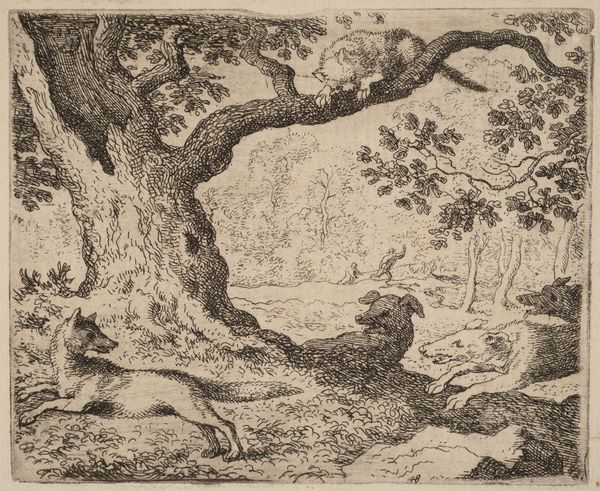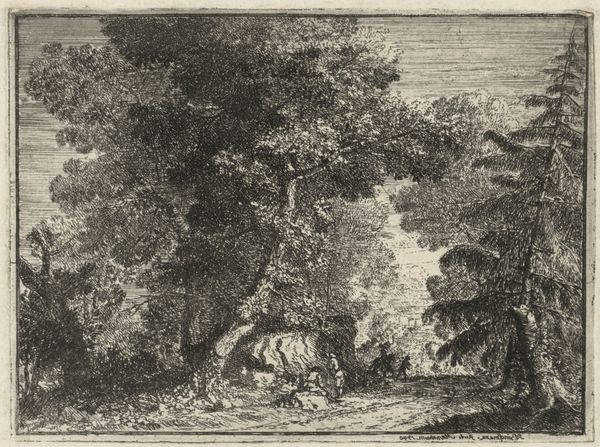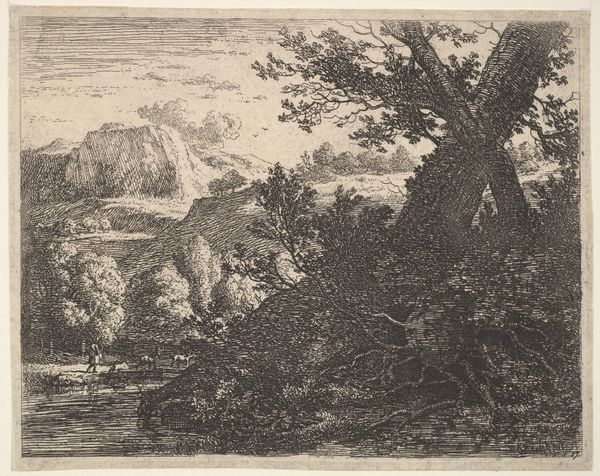
#
dutch-golden-age
# print
#
landscape
#
realism
Copyright: National Gallery of Art: CC0 1.0
Editor: Here we have "A Forest Marsh with Travelers on a Bank," also known as "The Travelers," by Jacob van Ruisdael. It's a print, and it strikes me as very intricate and detailed, but almost somber in its mood. What stands out to you? Curator: I immediately notice the artist's hand evident in the intricate etching technique. Each line, meticulously placed, reveals the labor and process embedded in creating this seemingly naturalistic scene. Consider the societal context; the Dutch Golden Age saw an increased market for such landscapes, often bought and sold reflecting nascent capitalist economies. What's being consumed isn't just an image, but a romanticized view of nature divorced from the realities of resource extraction happening simultaneously. Editor: So you're saying even landscapes were commodities? How does Ruisdael's choice of printmaking as a medium fit into that? Curator: Precisely. Prints made art more accessible, further fueling consumption. Also, think about the materials: the paper, the ink, the etching tools. Where did these come from? Who made them? These are rarely considered questions, but they are integral to a full understanding. The print isn’t just art; it’s the result of labor, material resources, and a particular mode of production and consumption. Editor: That's a fascinating perspective. It makes me consider all the hidden processes behind even a seemingly simple image. Thanks for opening my eyes to that. Curator: Indeed. Examining the means of production transforms our relationship to the artwork and enables us to engage critically with art's role in shaping our world and masking exploitation.
Comments
No comments
Be the first to comment and join the conversation on the ultimate creative platform.
